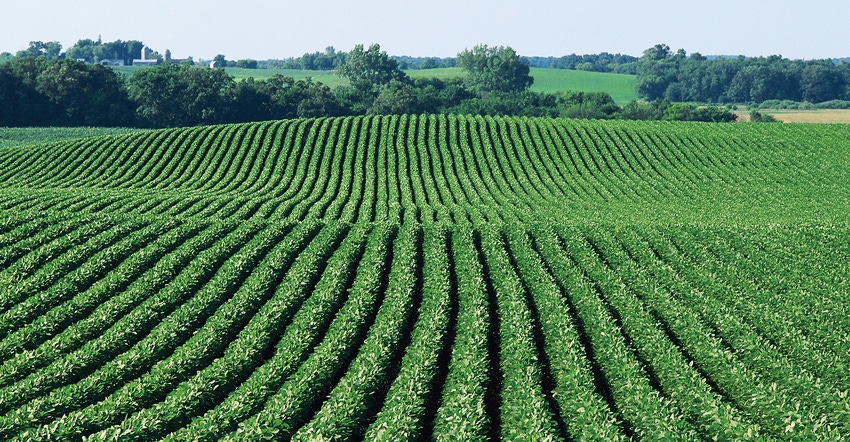March 15, 2018

Thinking about planting soybeans back on soybean ground this year? Jason Hanson, Webster, N.D., a Certified Crop Advisor and a regional agronomist with WinField United, points out some of the risks and rewards of beans on beans.
Risks
You run the risk of increasing disease pressure. Fields that are have issues with holding moisture can see more pythium or phytophthora. Even warmer weather diseases such as rhizoctonia can increase with this rotation. A seed treatment becomes almost necessary in these situations.
There’s a greater chance of having sclerotinia white mold show up due to inoculum from last year’s soybeans. Changing to wider row spacing could help. When doing this, also consider a different soybean genetic lineup with respect to disease package, maturity and ability to handle wider row spacing.
Recommendations
Don’t plant the same variety on that field as last year. Select the variety for the yield potential it has. But if managing last year’s soybean volunteers, winter annuals or biennials are an issue, look at different herbicide trait packages as well. With the current state of weed pressure, putting soybeans out and not planning around glyphosate resistant weeds could make for a tough-yielding crop. Look at use of burn-downs, pre-emergent chemistry and different herbicide traits like Liberty Link or Xtend.
Soybeans are a big user of phosphate (P) and potassium (K). If the plan is to go two years in a row with minimal resupply of those two nutrients, there will be a reduction is soil levels. While we seem to mainly worry about P levels, K is just as critical due to our movement to reduced/no-till and corn-soybean rotations. However, your overall fertilizer bill for second year soybeans may still be less than for some other crops.
Another risk in not rotating to another crop is insect pressure. Soybeans planted into the same fields as last year can have earlier insect infestations. Spider mites don’t have the potential to move as far as aphids, so they tend to be closer to last year’s fields.
Soil erosion loss can potentially occur if these fields are worked again. Soil loss to wind erosion this winter has been very noticeable. Also, most university studies have shown that there is a 5-10% yield loss if soybeans get planted after two years of continuous soybeans, and North Dakota State University has shown a 20% yield loss if there are four years of continuous soybeans in the last year.
Rewards
Generally, yields for soybeans on soybean ground the first year stay the same or move up. Weed pressure is much less if managed correctly. Soybean harvest ease is another reward, as the ground is already pretty level and you don’t have crop residue to deal with.
For more information, contact Hanson at 701-739-4126 or [email protected].
Find a CCA near you
To be a Certified Crop Advisor, candidates must be educated and experienced in crop advising; pass two comprehensive exams which prove their knowledge in nutrient management, soil and water management, integrated pest management and crop management; sign and adhere to a code of ethics; and maintain 40 hours on continuing education every two years. To find a CCA near you, visit certifiedcropadviser.org/growers, call 701-212-0404, or email [email protected].
You May Also Like




